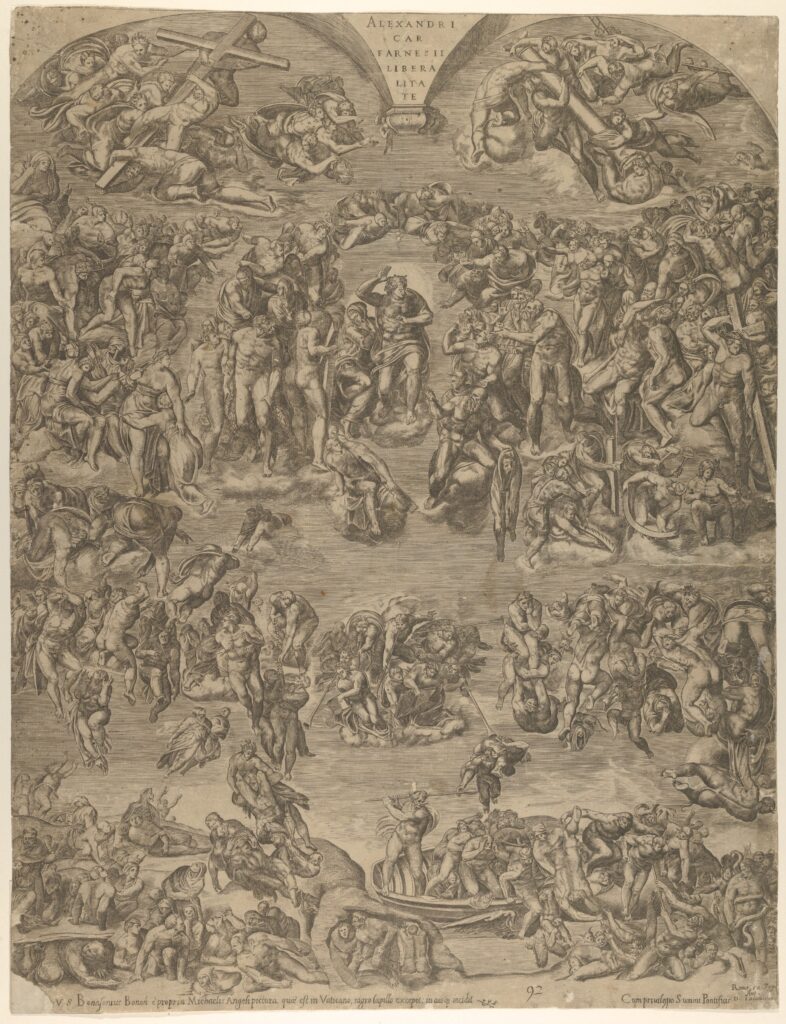


In 1637, Magdalen College commissioned a painted glass window in the Antechapel. Choosing the English artist Richard Greenbury (c.1600–70) for the project over an expensive Dutch artist the bursar had originally approached, Magdalen joined other Oxford colleges seeking to beautify their chapels through such large-scale glassworks.
Almost immediately after the West Window was erected in 1640, it faced the threat of destruction. With the onset of the English civil war, windows in churches across the country were reduced to shards by the parliamentarian army and those dedicated to Puritan iconoclasm. While other windows in the Magdalen Chapel were destroyed during the occupation of Oxford by parliamentarian forces, the West Window survived. However, in 1649, the portion of the window containing the image of Christ was removed by order of the College fellows and the recently elected president, John Wilkinson (1588-1650). The entirety of the painted glass was reunited in the window bay in 1675.


The earliest extant document concerning the origins of Magdalen’s commission for the West Window is an undated letter by the college bursar, Thomas Langton. In it, he describes his contentious interactions with a Dutch artist he had originally approached about the project.
This artist who remained unnamed in Langton’s letter was presumably Abraham van Linge, who also painted windows for other Oxford colleges including Christ Church, Lincoln, and Queen’s. Langton was resolute in his belief that that he could find a painter who would work for lower wages. Despite his conflict with van Linge, Langton nonetheless esteemed the knowledge of artisans, declaring: ‘These meckanickes or workmen of mistereys are as Learned in their kynde as any scoller in Oxford.’


This engraving of the Last Judgement by the Flemish printmaker Jan Sadeler I (1550-1600) served as the model for the chapel’s West Window. The print is based on a lost sixteenth-century painting by the Bavarian artist Christoph Schwarz (1548-92).
The print that survives in the Magdalen College Archives is presumably the selfsame version used by Greenbury in executing his project. Folds, stains, and discoloration of the paper signal its use in the workshop as Greenbury adapted Schwartz’s original design and scaled it up. Despite such wear and tear, the sheet’s preservation shows that members of the College recognized its value for posterity.


Schwarz’s design for the Last Judgement was itself based on Michelangelo’s famous fresco of this subject on the altar wall of the Sistine Chapel in the Vatican. Michelangelo’s design for this painting was readily available through prints that proliferated in the latter half of the sixteenth century.
Greenbury’s design suggests his awareness of Michelangelo’s Last Judgement. Indeed, in the West Window, Greenbury localized the groups of angels carrying the implements of the passion to the two trefoil diamonds above the central arch, a compositional decision that recalls Michelangelo’s division of such groups into the two lunettes at the top of the altar wall of the Sistine Chapel.